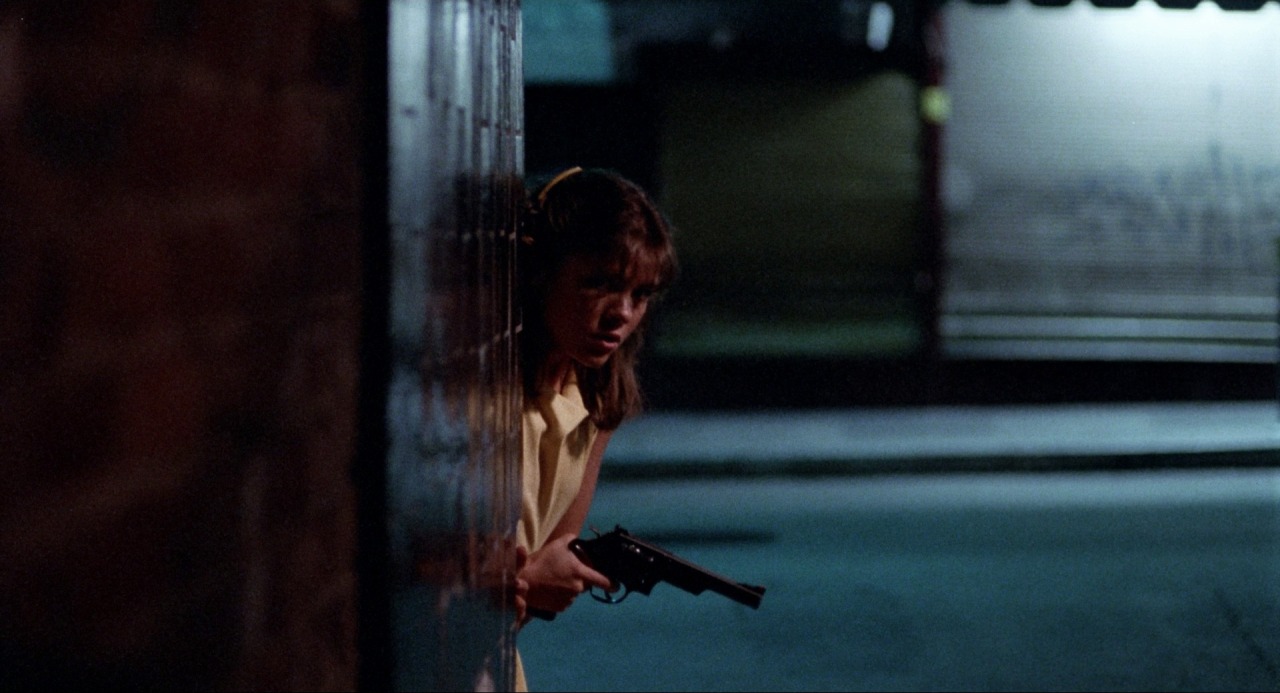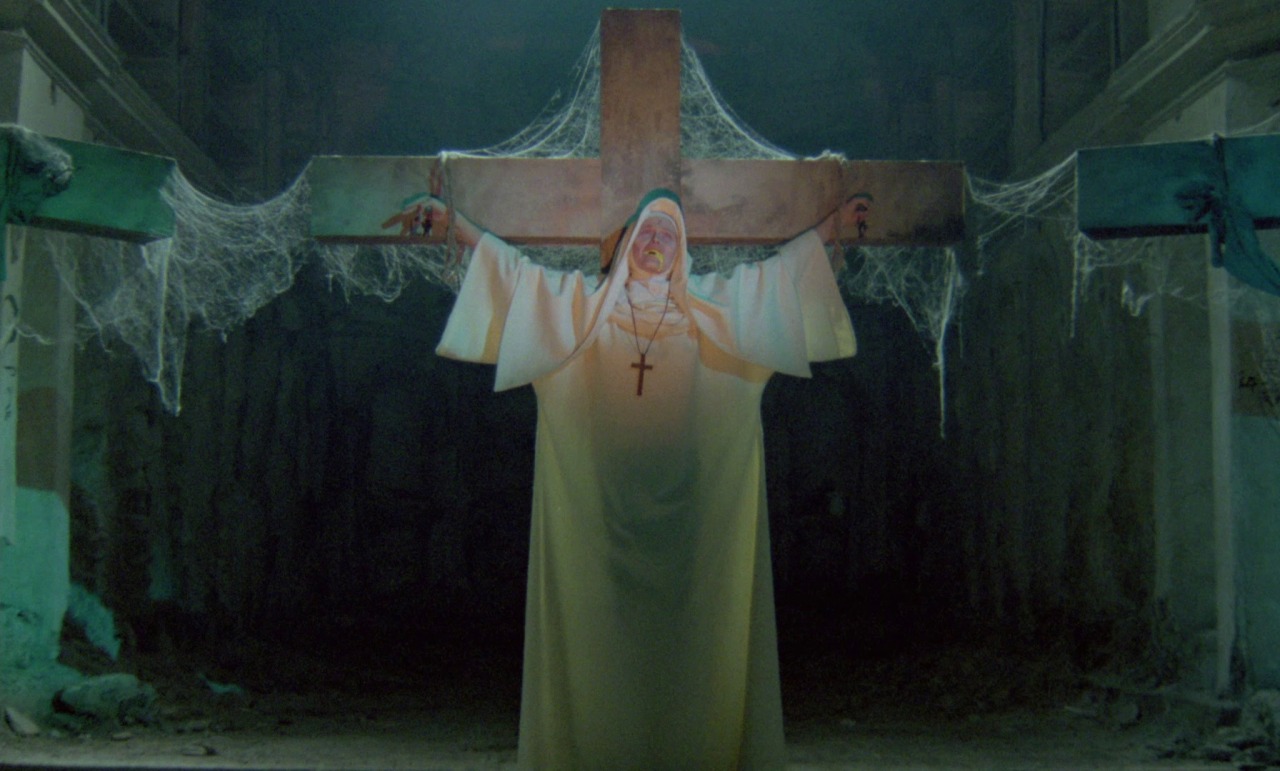Savage Streets (Steinmann, 1984)

When it comes to vigilante movies, one of the reasons that the original Death Wish is so effective is that it starts off at a recognizable human place. I do not agree with the conclusions that the movie reaches (that owning a gun will solve all your problems and that we should be allowed to murder criminals indiscriminately) but I appreciate that it has a level of grit to ground its depiction of New York as a crime-ridden hellscape in some form of reality, and that it does the legwork to plausibly evolve its protagonist from avowed pacifist to cold-blooded instrument of righteous violence. Of course, once that movie laid the groundwork of selling its genre, the sequels could shift away from those elements and focus on the exploitative elements that get asses in seats. By the third movie, the series had become practically a reflex of unhinged violence, cheerfully dishing scene after scene of increasingly contrived action and turning the inner cities into a warzone.
As vigilante thrillers expanded in other directions, you saw some of that same slipping away from reality. Class of 1984 presents an inner city school where an earnest new teacher ends up waging war against a vicious gang that dominates the school, yet with its vantage point occupied by an adult, the hysteria is grounded in something recognizable. Savage Streets does away with adults almost entirely, and its characters seem transported from a sinister alternate dimension where the teenagers all look at least thirty, dance with skeletons while waiting for science class to start, freely light up in the presence of school staff and get into fights in the showers while wearing leather pants. (During this scene, while the heroine fights another girl, two completely unrelated characters fight in the nude on the side. Perhaps they wanted to fit in?) The opening sequence, wherein a character steps out of his parents' home and promptly swaps his Harrington for a leather jacket to show us the no good piece of **** he is, attempts to link this to a Helen Lovejoy kind of hysteria ("Won't somebody please think of the children?"), but the effect is less than convincing. The only recognizable human character in sight is a deaf mute played by Linnea Quigley, who perhaps because she has no dialogue, behaves something like an actual teenager. She's the most sympathetic, and as a result of genre demands, is brutally gang raped by four punks. Like other such scenes in this genre, it is quite unpleasant, but I do think Quigley, a reliably vivacious presence elsewhere, is effective in selling this scene and her character's poignancy.
The movie is less moving but still entertainingly ridiculous when it shows the punks' other misdeeds, like when they repeatedly hassle a teenage deadbeat for overdue coke money and when they throw another girl, soon to be married with her wedding dress in hand, off an overpass. Bad news for them, the sister of the deaf mute girl and friend of the deceased is Linda Blair, who after finding little help from the adults in her life, takes the law into her own hands and exacts bloody vengeance. The movie doesn't sell the psychology of this transformation all that convincingly, but the limited sympathy of authority figures and lack of sympathetic males does seem grounded in some kind of emotional reality. Blair gets a suiting up sequence similar to the Schwarzenegger and Stallone vehicles of the era (her outfit and weapon of choice being a black jumpsuit and switchblade, respectively), and proceeds to dispatch the wrongdoers in a neat reversal of the stalk-and-slash sequences common in horror movies. (Like in Death Wish II, the film's appropriation of slasher movie tropes emphasizes the moralizing quality of the violence.) The movie never feels truly sleazy like certain other movies of the era (its tenuous grasp on reality and suburban milieu give it a grime tourist quality), but Blair is forceful in the central role and the movie dishes out its schlocky pleasures with plenty of energy.
__________________







